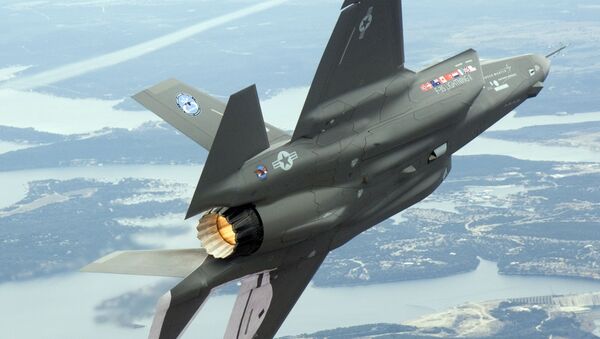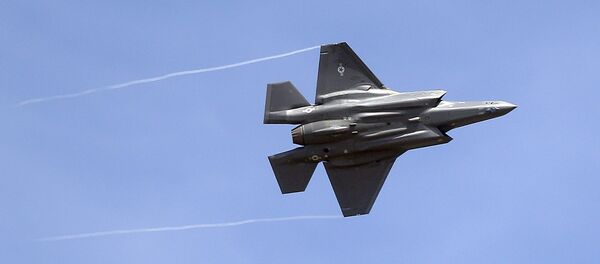The Pentagon's top research official is mulling whether to add air-to-air interceptors to the F-35's weapons arsenal in order to give the stealth fighters anti-ballistic missile capabilities, a new report says.
"We will, as the report implies, be studying that again, but I've seen recently any number of assessments — several assessments — which indicate that this is something we should be looking at," Mike Griffin, undersecretary of defense for research and engineering, was quoted as saying on January 17 by Defense News.
The White House's new Missile Defense Review calls for the US Air Force and Missile Defense Agency to study how the F-35 could be used for boost-phase missile interception, Defense Daily reported. The report is due to be issued in six months.
Griffin was apparently confident that anti-ballistic missile capabilities for the F-35 will be affordable.
"For certain regional geographies — North Korea comes to mind — we actually think its possible and cost-effective to deploy what I will loosely call air-to-air interceptors," said Griffin, noting that such systems could come in the form of "using the aircraft as either sensor or weapons platform."
The F-35 has a suite of six 17-pound electro-optical and infrared sensors mounted onto different parts of the aircraft. These sensors are supposed to help the pilot's visibility, but they may also have the capability to gather data about a ballistic missile on its way up and send that data to an interceptor launcher, Sputnik reported.
This is not the first time the Pentagon's $1.5 trillion F-35 program has been floated as an anti-ICBM platform, but experts continue to question the wisdom and even the feasibility of putting an anti-ballistic missile capability onto the aircraft. "This sets such a short timescale for detection and interception you'd have to be very close to the launch site… How do you get the F-35s in there safely? I think you would have to already be occupying North Korea to use it," Laura Grego of the Union of Concerned Scientists told Vice in late 2017, referring to the possible use of F-35s to intercept an ICBM launched from North Korea.
Lockheed Martin's multirole aircraft has incurred skyrocketing acquisition and sustainment costs, delivery issues and quality control problems. Budget watchdogs peg the total program cost, accounting for R&D, aircraft acquisition and operations and maintenance, at a staggering $1.5 trillion over 60 years.
"Right now, we can't afford the sustainment costs we have on the F-35," Ellen M. Lord, undersecretary of defense for acquisition and sustainment, told reporters in early 2018.





